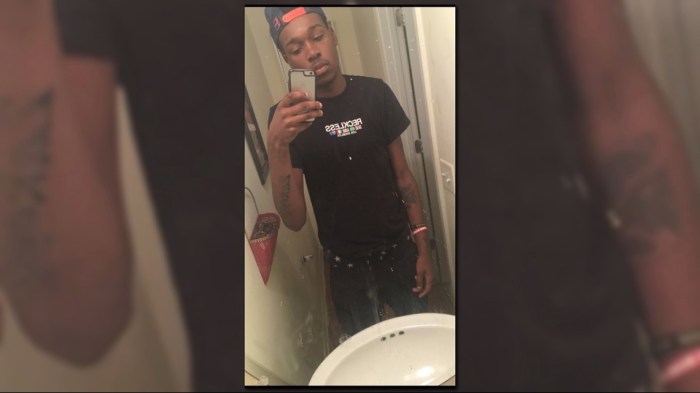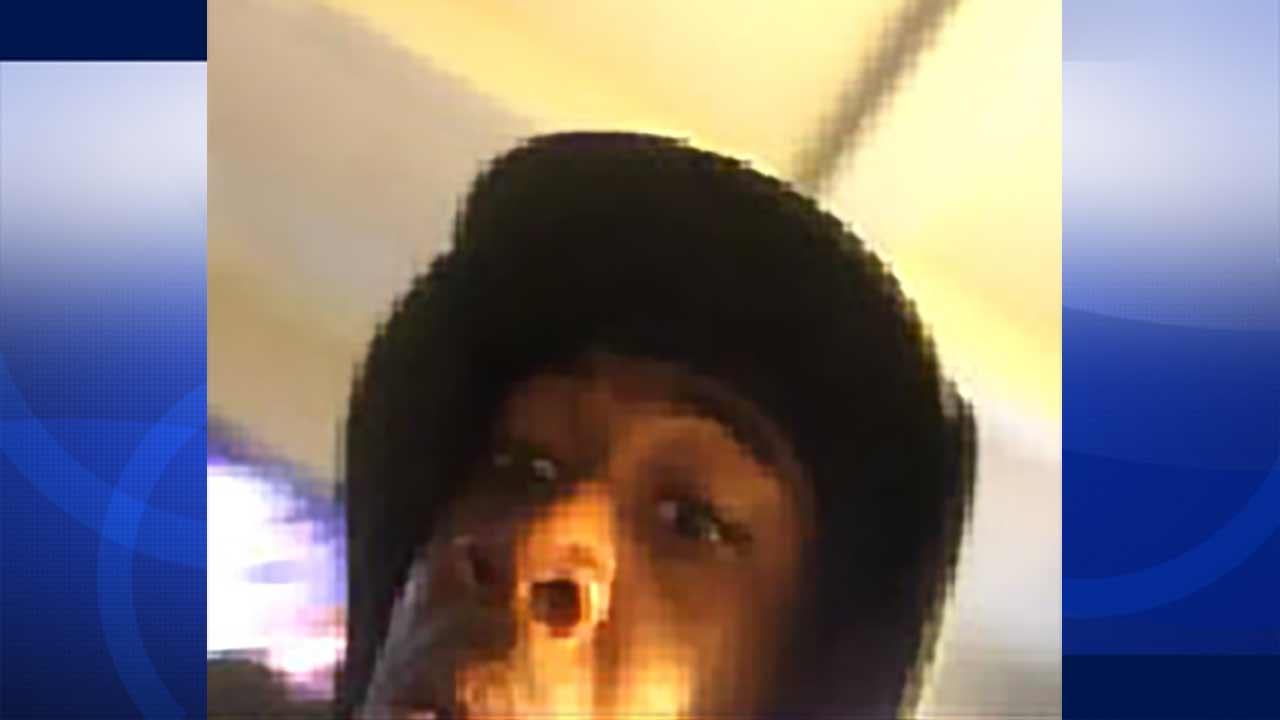Robber snaps selfie at crime scene caught later on – In a shocking turn of events, a robber’s selfie at the crime scene became his undoing, leading to his swift capture. This seemingly narcissistic act, captured on a smartphone, provided investigators with a unique piece of evidence, transforming the criminal into a digital fingerprint. The selfie, taken amidst the chaos of the robbery, not only documented the crime but also inadvertently revealed the robber’s identity, setting in motion a chain of events that ultimately led to his arrest.
The incident, which took place in [Location] on [Date], has sparked widespread debate about the role of technology in crime and the increasingly blurred lines between the physical and digital worlds. The selfie, a seemingly innocuous act in the age of social media, has become a potent symbol of the intersection of technology and criminal behavior. This case highlights the growing reliance on digital evidence in criminal investigations, as well as the potential consequences of impulsive actions in the digital age.
The Selfie at the Crime Scene
The scene of the crime was a convenience store located on a busy street corner in a bustling city. The time was 11:30 PM, just as the store was about to close for the night. The robber, armed with a handgun, entered the store and demanded money from the cashier. After receiving the cash, the robber took a selfie with the cashier in the background, seemingly oblivious to the seriousness of the situation.
The selfie, captured on the robber’s phone, became a crucial piece of evidence in the investigation. The image, shared on social media by the robber, was noticed by a friend who recognized the robber and the convenience store. This led to the robber’s identification and subsequent arrest.
Motives for Taking a Selfie at the Crime Scene
The motive behind the robber taking a selfie at the crime scene remains a subject of speculation. While some believe it was a reckless act of bravado, others suggest it could be a sign of mental instability or a desperate attempt to gain attention. The selfie could also be a form of self-documentation, a way for the robber to record the event and perhaps even relive the thrill of the crime.
The robber’s selfie at the crime scene serves as a stark reminder of the unpredictable nature of crime and the importance of digital footprints. It highlights the potential consequences of impulsive actions and the need for responsible social media behavior.
The Capture and Investigation: Robber Snaps Selfie At Crime Scene Caught Later On
The selfie, a seemingly harmless act of self-indulgence, became the robber’s undoing. The image, captured at the crime scene, provided law enforcement with an invaluable lead, transforming a seemingly impossible case into a solvable puzzle.
The investigators, armed with the selfie, embarked on a methodical and determined pursuit of the perpetrator.
Facial Recognition Technology
Facial recognition technology played a pivotal role in identifying the robber. The image was fed into specialized software that compared it against a vast database of mugshots and other facial images. This process, aided by advanced algorithms, identified a potential match, narrowing down the suspect pool.
Social Media Analysis, Robber snaps selfie at crime scene caught later on
The investigators expanded their search beyond traditional databases, delving into the vast landscape of social media. They utilized social media analysis tools to scan profiles, posts, and online interactions, looking for clues that could link the selfie to a specific individual. The analysis involved cross-referencing the selfie with publicly available images, identifying potential social media accounts associated with the suspect, and analyzing the suspect’s online activity for any patterns or connections to the crime.
Challenges Faced by Investigators
The investigators faced a number of challenges in this case.
- One significant challenge was the potential for false positives. Facial recognition technology, while highly advanced, is not infallible. It can sometimes generate inaccurate matches, leading to the misidentification of innocent individuals. The investigators had to carefully scrutinize the results, considering other factors and evidence to confirm the suspect’s identity.
- Another challenge was the possibility of the suspect using aliases or disguises. Social media analysis could be hindered if the suspect was adept at concealing their true identity online. Investigators had to employ sophisticated techniques to uncover hidden profiles and online activity, often requiring the collaboration of social media platforms.
- Furthermore, the investigators had to contend with the evolving nature of technology. Social media platforms constantly update their algorithms and features, requiring investigators to stay abreast of these changes to effectively utilize social media analysis tools.
The Psychology of the Robber

The selfie taken at the crime scene raises questions about the robber’s psychological state and motivations. While the act of taking a selfie may seem impulsive, it could be a manifestation of a deeper psychological dynamic. Analyzing the robber’s behavior can offer insights into their mindset and potential underlying issues.
The Potential Factors That Led to the Selfie
The selfie taken at the crime scene could be attributed to several factors. These include:
- Narcissism and Grandiosity: Some individuals with narcissistic tendencies may take selfies to bolster their self-esteem and project an image of power and control. In this case, the robber may have felt a sense of triumph or invincibility, leading them to document their act.
- Need for Attention and Recognition: The robber may have been seeking attention and recognition, hoping that the selfie would go viral or be seen by law enforcement, leading to notoriety. This desire for attention could stem from a lack of self-worth or a need to feel significant.
- Lack of Judgment and Impulsivity: The robber may have acted impulsively, without fully considering the consequences of their actions. The selfie could be a reflection of poor judgment and a lack of understanding of the gravity of their crime.
- Desire to Leave a Mark: The robber may have wanted to leave a lasting mark on the crime scene, perhaps as a way of asserting their dominance or claiming ownership of the act. This desire to leave a mark could be linked to a sense of powerlessness or a need to feel in control.
The Impact on Society

The selfie taken by the robber at the crime scene had a profound impact on society, sparking discussions about crime, law enforcement, and the role of technology in our lives. The incident served as a stark reminder of the evolving nature of crime and the challenges faced by law enforcement in the digital age.
Public Perception
The incident fueled public anxieties about crime and the perceived vulnerability of individuals and communities. The image of the robber nonchalantly taking a selfie at the crime scene, seemingly unfazed by the gravity of his actions, contributed to a sense of fear and insecurity. Some argued that this act of self-promotion and disregard for consequences reflected a growing disregard for authority and social norms. This incident also highlighted the potential for social media to be used as a tool for criminal activity, further fueling public concerns about privacy and online security.
Crime Prevention Strategies
The selfie incident prompted law enforcement agencies to reassess their crime prevention strategies, particularly in light of the increasing use of technology by criminals. This case highlighted the importance of incorporating digital forensics and social media monitoring into investigative practices. The incident also emphasized the need for public awareness campaigns to educate citizens about the risks of sharing personal information online and the potential for such information to be used for criminal purposes.
Law Enforcement
The case challenged law enforcement agencies to adapt to the changing landscape of crime. The ease with which the robber was identified and apprehended, thanks to the selfie, highlighted the potential of social media as a valuable tool for investigations. However, it also raised concerns about the ethical implications of using social media data in criminal investigations and the potential for privacy violations. This case prompted discussions about the need for clear guidelines and regulations regarding the use of social media in law enforcement.
| Topic | Impact |
|---|---|
| Public Perception | Increased anxiety about crime, heightened awareness of the potential for social media to be used for criminal activity, and concerns about privacy and online security. |
| Crime Prevention | Emphasis on incorporating digital forensics and social media monitoring into investigative practices, increased public awareness campaigns about online security, and the need for robust cybersecurity measures. |
| Law Enforcement | Recognition of social media as a valuable investigative tool, discussions about ethical guidelines for using social media data, and the need for clear regulations regarding social media use in law enforcement. |
The robber’s selfie at the crime scene serves as a stark reminder of the unintended consequences of our actions in the digital age. It highlights the vulnerability of individuals in a world where our digital footprints can be easily traced and used against us. The case also underscores the importance of responsible digital citizenship and the need to be mindful of the potential ramifications of our online activities. As technology continues to evolve, it is imperative that we approach our digital interactions with caution and awareness, recognizing that our online actions can have far-reaching consequences.
It seems like some criminals are becoming increasingly confident, like the one who snapped a selfie at the crime scene. While we might not all be snapping selfies, we can take comfort in knowing that safety features like automatic braking, which Toyota will make near standard by next year , are becoming more common. Perhaps with these advancements, even the most brazen criminals will think twice before leaving such a blatant clue behind.